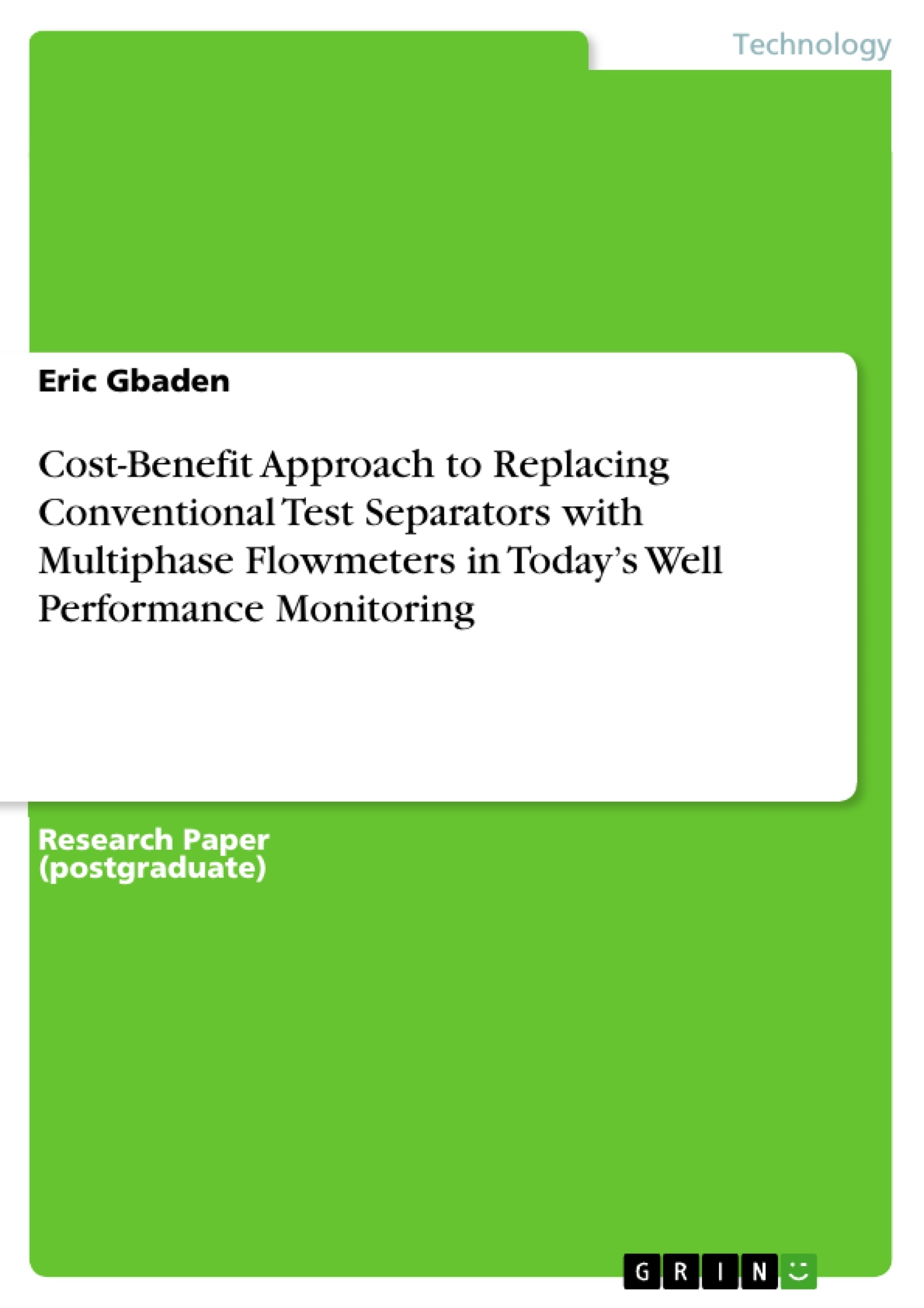In spite of advances in multiphase flowmeter technology since inception, test separators continue to hold relevance in well performance monitoring around the globe. This paper investigated the economic viability of replacing existing test separators with multiphase flowmeters in today's well performance monitoring using a cost-benefit approach for supporting management decision-making process. Data analysis using cost-benefit approach indicates that given the current procurement and installation cost for multiphase flowmeters, it is not economically viable to replace existing test separators with multiphase flowmeters on a per well basis. A sensitivity study showed companies may consider installing multiphase flowmeters on a per well basis for a facility with few producing wells but as more wells are drilled for expansion, multiphase flowmeter installation on per well basis loses its economic viability. The study supports leveraging synergies between multiphase flowmeter and multiport flow selector value technologies as a panacea for moving the needle on conventional test separator deployment.
Inhaltsverzeichnis (Table of Contents)
- Introduction
- Cost-Benefit Methodological Approach
- Assumptions
- Results and Discussion
Zielsetzung und Themenschwerpunkte (Objectives and Key Themes)
This paper examines the economic feasibility of replacing conventional test separators with multiphase flowmeters in well performance monitoring. The analysis employs a cost-benefit approach to determine the financial viability of this investment, considering factors such as installation costs, operational expenses, and production efficiency.
- Economic evaluation of replacing test separators with multiphase flowmeters
- Cost-benefit analysis for decision-making on multiphase flowmeter deployment
- Comparison of costs and benefits associated with both technologies
- Sensitivity analysis to explore the impact of varying discount rates
- Assessment of the break-even point for investment in multiphase flowmeters
Zusammenfassung der Kapitel (Chapter Summaries)
- Introduction: This chapter introduces the concept of multiphase flowmeters and highlights the drawbacks of conventional test separators used in well performance monitoring. It emphasizes the need for real-time data and the desire to move away from traditional methods.
- Cost-Benefit Methodological Approach: This chapter outlines the methodology used to evaluate the economic viability of replacing test separators with multiphase flowmeters. It introduces the Cost-Benefit Model, which provides a framework for comparing project alternatives.
- Results and Discussion: This chapter presents the results of the cost-benefit analysis, comparing the costs and benefits associated with multiphase flowmeters and test separators. It includes a table outlining the costs and benefits over a fifteen-year service life, considering various factors such as installation, maintenance, and operational expenses. The chapter also explores the break-even point and the sensitivity of the analysis to varying discount rates.
Schlüsselwörter (Keywords)
This paper delves into the economic feasibility of utilizing multiphase flowmeters as a replacement for conventional test separators in well performance monitoring. The research focuses on a cost-benefit analysis, employing a sensitivity analysis to determine the break-even point and economic viability. Key themes include the economic assessment of alternative technologies, the impact of discount rates on investment decisions, and the evaluation of capital and operational expenses associated with both multiphase flowmeters and test separators.
- Quote paper
- Eric Gbaden (Author), 2020, Cost-Benefit Approach to Replacing Conventional Test Separators with Multiphase Flowmeters in Today’s Well Performance Monitoring, Munich, GRIN Verlag, https://www.grin.com/document/1168262



